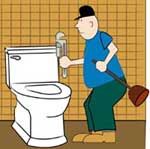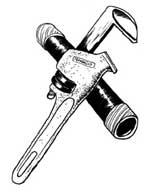|
Sheetrock: What, When, Where, Why and How
Sheetrock is also known as drywall, gyproc, plasterboard, gypsum board, and wallboard. Sheetrock is made from thin panels of gypsum plaster that is coated on both sides with a thick paper. These large sheets are cut to desired size and used to cover large interior surfaces such as walls and ceilings. Although regular drywall is the answer for most drywall repair jobs there are some special kinds of drywall manufactured for high humidity or exposure to direct water. Varying types of drywall/sheetrock including Fire Resistant, Greenboard and Blueboard, Cement Board, and Soundboard are manufactured for specific applications to achieve desired results. Tools Required: With a well experienced crew new construction drywall jobs can be installed and crackfilled in a matter of days.Although doing it yourself will probably take a bit longer it is less expensive and very rewarding to see the finished job. How to apply sheetrock: Drywall sheets are 48" wide. This is so that the sheet will completely cover two studs and sit half way between two other studs on both out-side edges when positioned vertically on a wall. This allows for the next sheet of drywall to sit side-by-side and also have a stud to nail to. There are many possibilities when it comes to the proper way to hang drywall. As long as there is something to nail to on all the edges you can’t go wrong. Cut the drywall to desired length and width and carefully cut out necessary holes for the electrical sockets and light switchs. These straight lines can be cut using a sharp utility knife after the precise lines have been drawn and proper measuring has been done. Score one side really well, then bend it backward and cut along the bent edge again. This makes a good clean cut.
Measure twice and cut once! A great rule of thumb for any construction job!The holes for light switches and plug-ins can be cut out easily by using the keyhole saw. I like to trace around an extra electrical box on the full sheet of drywall and then cut it out. Attach the drywall to wall or ceiling using drywall screws. Do not use nails- they move and eventually show up on the surface causing havoc down the road. Once you have secured the drywall to the wall it is time to finish by filling the seams and screw holes with drywall compound. Refer to crackfilling a new wall page for more info on finishing new construction drywall.
Return to Family Handyman Questions Home Page from Sheetrock Page
|
Family Handyman Quick Links
Looking for a Toronto plumber? Hiring a plumber can effectively fix your plumbing!
Download free Handyman clipart
Download free Handyman Business forms


